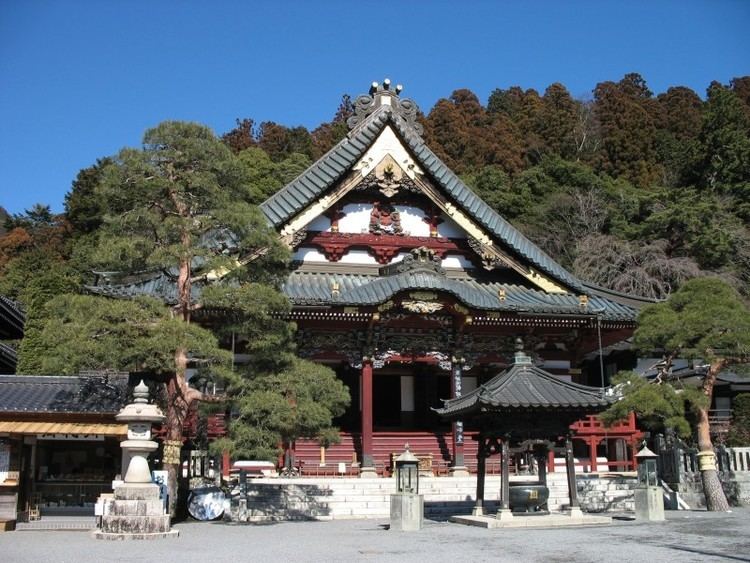Phone +81 556-62-1011 | Burials Matsudaira Yorisato | |
 | ||
Similar Mt Minobu, Mt Shichimen, Minobu Station, Ikegami Honmon‑ji, Taiseki‑ji | ||
Kuon-ji (久遠寺) is a major temple in Yamanashi Prefecture, Japan. Founded by Nichiren in 1281 it is today the head temple of Nichiren Shū. Locally it is referred to as the Minobu-san Temple, after the mountain upon which it is built.
After leaving Kamakura Nichiren was invited by the magistrate Nambu Sanenaga to stay on his property in 1274. Soon after his arrival Nichiren set up a hermitage that became a centre of learning to Nichiren's disciples and adherents. The original dwelling became too small and in 1281 Nichiren founded the temple nearby and named it Minobusan Kuon-ji. Following Nichiren's wishes his ashes were brought to the temple and are enshrined in a mausoleum on the temple grounds.
While the Ikegami Honmon-ji is also Nichiren Shū's administrative centre, Kuon-ji today plays an important role as a place of learning for the schools training of novices.
It is famous for its 287 steps of stone stairs known locally as "the steps of enlightenment", which are climbed by chanting pilgrims regularly each year. The golden dragon painted on the black ceiling of the main temple is a notable feature usually pointed out by monks at the temple as the dragon has five toes, making it a Japanese dragon.
The blossoming of thousands of cherry trees, including the hundred-year-old weeping cherry tree in the garden, also makes this temple a popular tourist destination.
Over 1.5 million people visit the temple annually. It is reached by bus or car and then climbing the 287 steps, or alternatively scaling the sloping road which curves around the back of the temple.
Behind the temple proper is a cable car which takes tourists and pilgrims up to the top of the mountain and further temple buildings.
